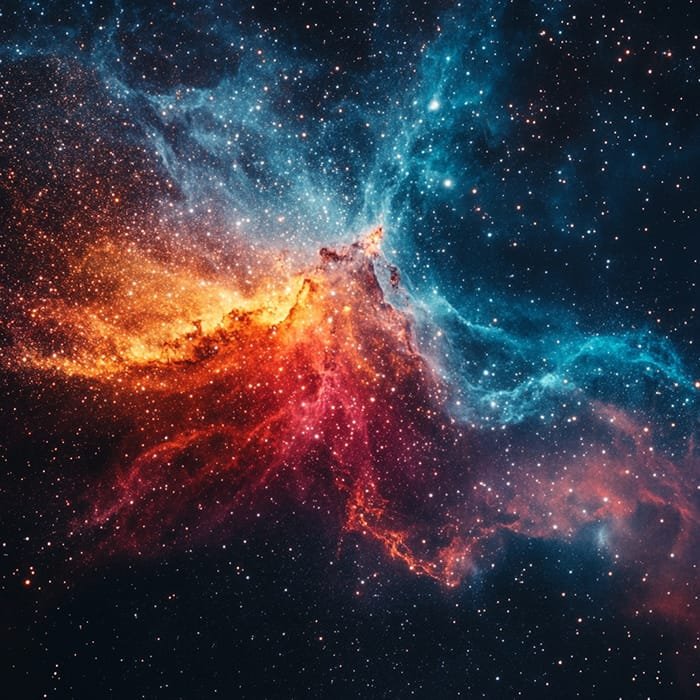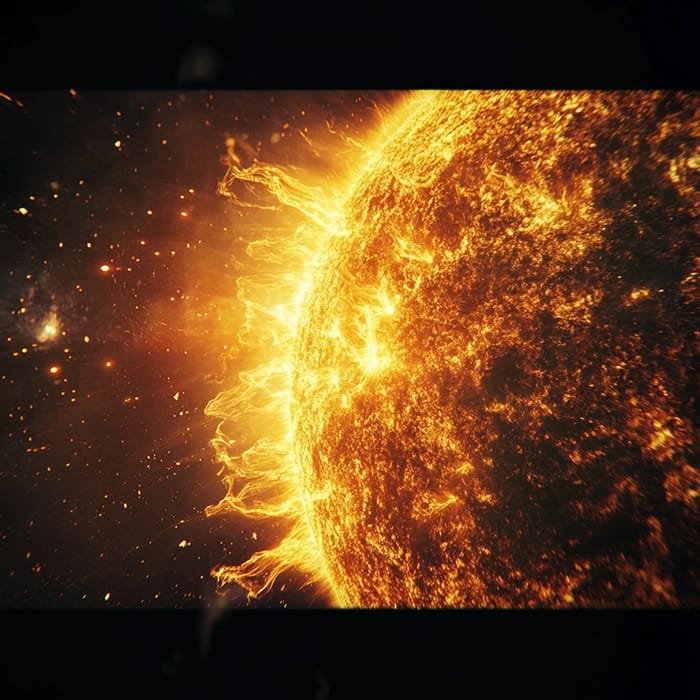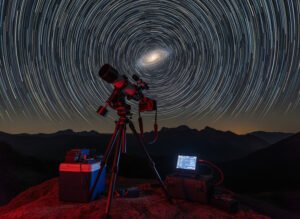The Big Bang Theory explains the universe’s origin 13.7 billion years ago, with evidence from cosmic expansion, CMB, and light elements.
Key Takeaways 📝
- The universe’s expansion, first observed by Edwin Hubble, supports the Big Bang Theory, suggesting it began from a hot and dense state 13.7 billion years ago.
- The Cosmic Microwave Background Radiation (CMB), discovered in 1964, serves as a crucial remnant from the early universe, aligning with predictions of the Big Bang model.
- Observations of mature galaxies in the early universe challenge the Big Bang Theory, prompting exploration of alternative explanations for cosmic origins.
- Particle physics experiments, like those at the Large Hadron Collider, recreate conditions of the early universe, providing empirical support for the Big Bang Theory.
- While the Big Bang Theory remains the leading explanation for the universe’s origins, ongoing research into dark matter and dark energy is essential to address existing challenges and anomalies.
Exploring the Big Bang Theory: Evidence, Validation, and Challenges
The Big Bang Theory is the cornerstone of modern cosmology, proposing the universe’s inception from an immensely hot and dense state approximately 13.7 billion years ago. It suggests an ongoing expansion, shaping the cosmos as we perceive it today. Despite its widespread acceptance, the question arises: Can the Big Bang Theory be proved? This exploration delves into the evidence supporting this theory, scientific experiments that attempt to validate it, and the challenges it faces, drawing from a variety of scientific insights to provide a comprehensive understanding.
Evidence Supporting the Big Bang Theory

Expansion of the Universe
One of the most striking pieces of evidence for the Big Bang Theory is the universe’s expansion. This discovery is credited to Edwin Hubble, who observed that distant galaxies are receding from us at speeds proportional to their distances—a phenomenon encapsulated in Hubble’s Law. This observation suggests that the universe is expanding uniformly, implying that it was once concentrated in a singular, dense point. This concept fundamentally supports the Big Bang model, indicating that the universe has been expanding from a single origin point.
Cosmic Microwave Background Radiation (CMB)
The Cosmic Microwave Background Radiation (CMB) is a crucial relic from the early universe, providing strong evidence for the Big Bang Theory. Discovered accidentally in 1964 by Arno Penzias and Robert Wilson, the CMB is a faint glow permeating the entire universe, consistent with the remnants of the Big Bang’s heat. The uniformity of this radiation across the sky and its alignment with theoretical predictions about the universe’s state shortly after the Big Bang reinforce its significance as evidence supporting the theory.
Abundance of Light Elements
The Big Bang Theory predicts the proportions of light elements such as hydrogen, helium, and lithium that were formed during the universe’s first few minutes. Known as Big Bang nucleosynthesis, this process describes the production of these elements, which aligns closely with their observed abundances in the universe. This correlation between prediction and observation adds weight to the theory, supporting the idea of an early, hot, and dense universe.
Redshift of Galaxies
The redshift phenomenon, where light from distant galaxies is stretched towards longer wavelengths, serves as another critical piece of evidence for the Big Bang Theory. This redshift is interpreted as a sign of galaxies moving away from us, consistent with an expanding universe. This observation, combined with Hubble’s findings, supports the notion that the universe has been expanding since the Big Bang, providing a compelling argument for the theory’s validity.
Looking Back in Time
Telescopes function as time machines, allowing astronomers to observe distant celestial objects and, consequently, look back in time. This capability offers invaluable insights into the universe’s early stages, supporting the Big Bang model. Observations of the large-scale structure of the universe, the formation and evolution of galaxies, and the distribution of cosmic matter align with predictions made by the Big Bang Theory. These observations reinforce the theory’s foundational principles and validate its predictions.
Scientific Experiments Validating the Big Bang Theory

Particle Physics and Collider Experiments
Particle physics experiments, particularly those conducted in particle colliders like the Large Hadron Collider (LHC), play a pivotal role in validating the Big Bang Theory. By recreating the high-energy conditions of the early universe, scientists can observe the behavior of fundamental particles and forces. These experiments have provided insights into the formation of matter and the conditions prevailing moments after the Big Bang, offering empirical support for theoretical models.
Observations of Cosmic Structures
Advancements in observational technology have enabled astronomers to examine cosmic structures with unprecedented precision. Observations of the cosmic web—the vast network of galaxies and dark matter—provide evidence for the processes predicted by the Big Bang Theory, such as gravitational collapse and galaxy formation. These observations align with simulations based on the Big Bang model, further validating its framework.
Gravitational Wave Detection
The detection of gravitational waves, ripples in spacetime caused by cataclysmic events, has opened a new frontier in cosmology. These waves offer insights into the universe’s dynamic processes, including events that occurred shortly after the Big Bang. The study of gravitational waves complements other observations, providing an additional method to test and validate the predictions of the Big Bang Theory.
Challenges to the Big Bang Theory
Contradictions and Anomalies
Despite the robust evidence supporting the Big Bang Theory, certain contradictions and anomalies challenge its comprehensive acceptance. Observations of mature galaxies existing in the early universe, which appear more developed than the Big Bang model would predict, pose questions about the theory’s completeness. Additionally, some scientists argue that the redshift of galaxies might be influenced by factors other than expansion, such as variations in temperature or changes in distance.
Alternative Explanations
In response to the challenges faced by the Big Bang Theory, several alternative theories have been proposed. These include eternal inflation, suggesting a multiverse with continuously spawning universes; the oscillating universe, proposing an infinite series of expansions and contractions; and Modified Newtonian Dynamics (MOND), offering alternative explanations for galaxy dynamics without dark matter. Although these theories provide different perspectives on the universe’s origins, none have achieved the empirical support or comprehensive explanatory power of the Big Bang Theory.
Dark Matter and Dark Energy
The Big Bang Theory relies heavily on the existence of dark matter and dark energy to explain the universe’s large-scale structure and accelerated expansion. However, these components remain enigmatic, with their properties and behavior poorly understood. The ongoing quest to directly detect dark matter and understand dark energy’s nature represents a significant challenge to the Big Bang Theory, as these elements are integral to its framework.
The Big Bang Theory stands as a monumental achievement in scientific understanding, supported by substantial evidence from cosmic expansion, the CMB, and the distribution of light elements. While it cannot be “proved” in the absolute sense, as scientific theories are inherently open to refinement and challenge, it remains the most compelling explanation for the universe’s origins. The theory has withstood rigorous testing through observations and experiments, yet anomalies and alternative theories highlight the need for continued exploration and refinement. As our understanding of dark matter, dark energy, and the universe’s earliest moments deepens, the Big Bang Theory will continue to evolve, potentially revealing even more profound insights into the cosmos.
























